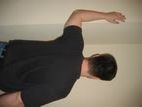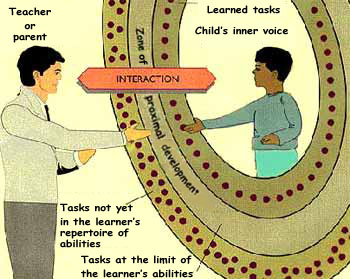The following is a general template for people, like me, who enjoy kettlebells, squats, and pull-ups. It’s not for everyone, but it will make you strong and explosive. It's meant to be a general fitness training template.
If you like "routine", and by "routine" I mean very little variation, then it may be right up your alley. It’s very barebones and that's on purpose - if there are weaknesses to be addressed, then having a template with room and flexibility for accessory work makes it more likely to happen.
Recommended extra sessions are included for off-days if you’re itching to do more, but they can be dropped or modified as desired. For accessory work in this template, I’ve included “stretching”, “abdominals”, “rows”, and “push-ups”. Understand that stretching while watching the boob-tube qualifies as an "extra session" – you don’t have to make a special trip to the gym to do the accessory work.
WEEK 1
Session #1: Squats, Chins (Heavy, 2-5 sets)
Session #2: KB Snatch (EDT Protocol, 2-12 minutes)
Session #3: Squat, Chins (EDT Protocol, 10-15 minutes)
Session #4: KB Jerks or LCCJ (EDT Protocol, 2-12 minutes)
Optional Extra Sessions
a) Stretching
b) Abdominals or Rows, push-ups
c) Stretching
WEEK 2
Session #1: Squats, Chins (Heavy, 2-5 sets)
Session #2: KB Jerks or LCCJ (Paced Work)
Session #3: Squats, Chins (EDT Protocol, 10-15 minutes)
Session #4: KB Snatch (Paced Work)
Optional Extra Sessions
a) Stretching
b) Abdominals or Rows, push-ups
c) Stretching
SQUAT & CHIN SESSION #1 (HEAVY)The first squat and chin session of the week is heavy, working up to 2-5 intense sets of 3-6 repetitions in the squat and 2-5 sets of chins a rep or two shy of failure. Please don’t ask me why I chose 2-5 sets and 3-6 repetitions – it’s a formula comprised of a proprietary blend of clandestine periodizations. If I were to reveal its inner workings, I would lose my edge as THE internet trainer of (world) champions... In all seriousness, 3-6 reps is a good compromise for “heavy”, and 2-5 sets allows for some volume flexibility. Two solid sets of heavy triples is a good solid, maximal-effort-like session, while 5 sets of 6 heavy reps is almost Smolov-esque and if you’ve ever done even a few sessions of a Smolov squat cycle, you’ll know what I’m talking about.
SQUAT & CHIN SESSION #2 (EDT)The second squat and chin session is lighter, but not without effort. You will be following the
EDT protocol. The goal of “density training” is to complete as much volume as possible in a given time frame, which means that after a warm-up, you will be alternating sets of squats with sets of chins and shooting for as many total repetitions in 10-15 minutes as you can. Reps can be partitioned however you’d like among sets, but generally the earlier sets will be paced somewhat – working to failure on early sets will make later sets excruciating and will likely mean less total volume for the session. You can adjust the weight you are using, but generally, you should be using a weight that you could get 10-15 repetitions with. For chins, you will have to pace your reps sufficiently that you don't fail to perform at least one rep in your later sets.
On alternate sessions, you will be doing kettlebell work. The exercises you will be doing are the one-arm kettlebell snatch, kettlebell jerks (with one or two kettlebells), and kettlebell clean and jerks, also known as the "long cycle clean and jerk" (one or two kettlebells).
KETTLEBELLS (EDT PROTOCOL) – WEEK #1Kettlebell “EDT Protocol” sessions will be density driven – the goal will be to get as many reps as possible within 2-12 minutes, determined by a roll of a pair of dice. Yes, it is a Dan John inspired idea – you can send the check to him.
Snatch sessions will be 2-12 minutes of snatching, switching hands as desired and setting the bell down as needed. Hand switches and setting the bell should be noted in your training log. For example, in the training notes below, commas indicate setting the bell down and slashes indicate hand switches.
KB Snatch (53lbs): x10/10/10/10/5/5, x10/10, x10/10, x5, x5
Total Time: 5:00
Total Reps: 100
Unless noted, it is assumed that hands are switched when resuming work after setting the bell down.
KETTLEBELLS (PACED WORK) – WEEK #2Kettlebell “paced work” sessions will be geared toward maintaining form and effort for longer durations of time and with less hand switches. Local muscular endurance of the shoulders and grip will be taxed more with this approach, but that certainly doesn’t mean that you won’t be pushed systemically.
The goal is to NOT set the bell down at all nor switch hands more than once during each of three to five 2-6:00 bouts of effort, separated by 1-2:00 long rest periods.
A paced work session might look like the following:
Warm-Up = swings and light jerks
One-Arm Long Cycle Clean and Jerk w. 53lbs
(2:00) x8/8
(2:00) rest
(2:00) x8/8
(2:00) rest
(2:00) x10/10
Stretching
Most people could always do more in the way of doorway shoulder stretches and hamstring flexibility work. The doorway stretch is easy to perform in a power rack or doorway. Simply, place your forearm(s) flat against the sides of the door or on the power rack supports and move your torso forward and slightly outward to feel a stretch across the pectorals and delts.

For hamstrings, a good morning stretch (essentially the same movement as a Romanian deadlift) done properly, stretches the glutes, hams, and even hits the calves to some extent without straining the lower back with flexion. The lower back should be as straight as possible throughout and the hips should be driven back as far as possible. Some leg bend is actually preferable and it will help you avoid lower back flexion.
Some Q&A"Would this template work for girevoy sport competitors?"No. Well, maybe for a little off-season GPP work.
"Would this template work for powerlifters?"Hell no. Well, maybe for a little off-season GPP work.
"...bodybuilders?"... Well, maybe for...
"How long can I keep going with this template?"I think 4 weeks is about as much as most people will want to continue with the template before having a week or two of variation or rest.
"I don't feel like I'm doing enough in each training session. What other exercises should I add?"The template is meant to be skeletal. I think for busy people, it is more than enough, but adding some pressing, or rows, or anything else that needs shoring up wouldn't hurt.
”I can’t do (very many) pull-ups at all. What should I do?”Start by doing what you can – if that means you are doing sets of singles, doubles, or triples, that’s fine. You will improve. If you can’t do a single pull-up, then do jumping pull-ups emphasizing the eccentric as much as possible.
”I’d like to do more kettlebell work (or squatting), how can I modify the template?”If you would like to specialize, the template can be modified so that you are training either the squat or the kettlebells 3x/week.
EXAMPLE #1
Session #1: KB Snatch (EDT Protocol)
Session #2: KB Jerks or LCCJ (Paced Work)
Session #3: Squats, Chins (EDT Protocol)
Session #4: KB Swings & Press (EDT Protocol)
EXAMPLE #2
Session #1: Squats, Chins (EDT Protocol)
Session #2: Squats, Chins (Heavy)
Session #3: KB Snatch (Paced Work)
Session #4: Squats, Chins (EDT Protocol)



















































